
When young Temple was diagnosed with autism, no one expected her to talk, let alone become one of the most powerful voices in modern science. Yet, the determined visual thinker did just that. Her unique mind allowed her to connect with animals in a special way, helping her invent groundbreaking improvements for farms around the globe. Also included are fun facts, a timeline of events, and a note from Temple.
The Girl Who Thought in Pictures: The Story of Dr. Temple Grandin

When Temple Grandin was born, her parents knew that she was different. Years later she was diagnosed with autism. Her mother believed in her abilitie and supported her education, and Temple eventually went on to graduate school. Today, Dr. Temple Grandin is a scientist and professor of animal science at Colorado State University. Through her work she revolutionized the livestock industry. As an advocate for autism, Temple uses her experience as an example of the unique contributions that autistic people can make. This biography, complete with personal photos, takes us inside Temple’s extraordinary mind and opens the door to a broader understanding of autism.
Temple Grandin: How the Girl Who Loved Cows Embraced Autism and Changed the World

“Ezra looks like any other sixth grader with faded jeans, turned around cap and a mess of chestnut curls. You see, my brother is like any other eleven-year-old except when he isn’t.” This story follows 14-year-old Jenny as she describes her day-to-day life with her younger autistic brother, Ezra. Ezra can be both her best friend as well as her biggest obstacle to living a normal life, and Jenny often finds herself stuck worrying about her younger brother. Through taking care of Ezra and a very special school project, Jenny ends up learning about her own character and strengths, and a way to shine despite everything else.
Autism, the Invisible Cord: A Sibling’s Diary
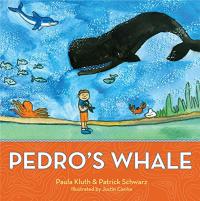
Pedro, a young boy who loves whales more than anything, is heartbroken when he’s told to put away his favorite toy whale on the first day of school. But then Pedro’s teacher discovers the secret to helping him do his best work: not only giving him his whale, but also incorporating his special interest into the whole curriculum. Soon, Pedro’s whale is helping all the children learn, as the teacher works whales into math lessons, storytime, simple science experiments, and more! Pedro’s whale helps him make friends, too, as the other children start to share his special interest.
Pedro’s Whale

Louis, a self-taught space expert is delighted to learn that his teacher has sent him to the principal’s office to attend personal space camp. Eager to learn more about lunar landings, space suits, and other cosmic concepts, Louis soon discovers that he has much to learn about personal space right here on earth. Written with style, wit, and rhythm, personal space camp addresses the complex issue of respect for another person’s physical boundaries. Told from Louis’s perspective, this story is a good resource for parents, teachers, and counselors who want to communicate the idea of personal space in a manner that connects with kids.
Personal Space Camp

All of Louis thoughts are very important to him. In fact, his thoughts are so important to him that when he has something to say, he erupts, or interrupts others. His mouth is a volcano! This story takes an empathetic approach to the habit of interrupting and teaches children a witty technique to capture their rambunctious thoughts and words for expression at an appropriate time. Told from Louis’s perspective, the story provides parents, teachers, and counselors with an entertaining way to teach children the value of respecting others by listening and waiting for their turn to speak.
My Mouth Is a Volcano!

NO is RJ s least favorite word … and he tries his best to convince his dad, his mom, and his teacher to turn No into Maybe or We’ll see or Later or I’ll think about it. Even though he doesn t have much success, RJ keeps arguing until his teacher suggests that he try to join her classroom s Say YES to NO Club. If RJ can learn how to accept No for an answer and to disagree appropriately with his teacher and parents, he can add his name to the club’s Star Board.
I Just Don’t Like the Sound of No!

Louis is a verb! He has a lot of trouble focusing and he is always doing something, but the problem is usually it’s the wrong something. It’s hard to be a verb! My knees start itching, my toes start twitching, my skin gets jumpy, others get grumpy. When it comes to sitting still it s just not my deal. Haven’t you heard… I am a verb! Louis mom teaches him how to focus by showing him a few hands on ideas that anyone can try. A helpful book for all who struggle with paying attention.
It’s Hard To Be a Verb!

Jay can make his own breakfast, dress himself, and play by himself, but sometimes he feels sad and wishes for a friend. When a magical horse appears and befriends Jay, his wish comes true. This interactive book was developed for use with children with developmental and learning differences and disabilities, including autism spectrum disorder, ADHD, and dyslexia. It is designed to help educators, parents, and caregivers teach children about language, reading, story comprehension, functional skills, and basic concepts.
Jay and Ben
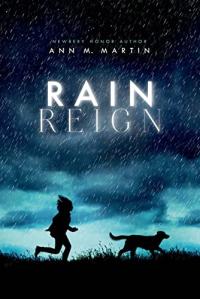
Rose Howard is obsessed with homonyms. She gave her dog Rain a name with two homonyms (Reign, Rein). Not everyone understands Rose’s obsessions, her rules, and the other things that make her different — not her teachers, not other kids, and not her single father. When a storm hits their rural town, rivers overflow, the roads are flooded, and Rain goes missing. Now Rose has to find her dog, even if it means leaving her routines and safe places to search. Though Rose’s story is often heartbreaking, her matter-of-fact narration provides moments of humor. Readers will empathize with Rose, who finds strength and empowerment through her unique way of looking at the world.
Rain Reign
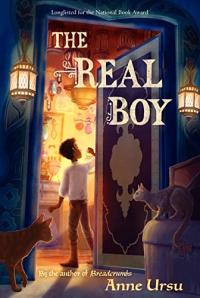
Oscar knows he’s different. He can’t remember where he comes from, he has an encyclopedic knowledge of magical herbs and their uses, and he just does not understand human interaction. As the apprentice to Caleb, the last magician in the magic-steeped Barrow, Oscar’s job is to collect the herbs, prepare the charms and tinctures, do his chores, and avoid trouble. That changes when a mysterious destructive force arrives and it is up to Oscar and his friend Callie to protect the Barrow and its inhabitants.
The Real Boy
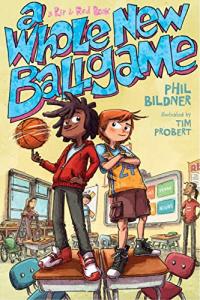
Rip and Red are best friends whose fifth-grade year is nothing like what they expected. They have a crazy new tattooed teacher named Mr. Acevedo, who doesn’t believe in tests or homework and who likes off-the-wall projects. Easy-going Rip is knocked completely out of his comfort zone. And for Red, who has autism and really needs things to be exactly a certain way, the changes are even more of a struggle. But together these two make a great duo who know how to help each other ― and find ways to make a difference ― in the classroom and on the court.
A Whole New Ballgame
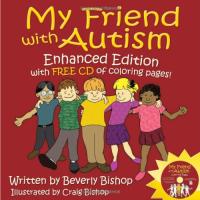
The young narrator explains that his friend with autism is good at some things and not so good at others — just like everyone else! In an informative, positive tone, he addresses issues such as sensory sensitivity, communication differences, unique ways of playing, and insistence on routine. At the end of the book are notes for adults, which supplement the text with facts and explanations for teachers and classmates’ parents.
My Friend with Autism
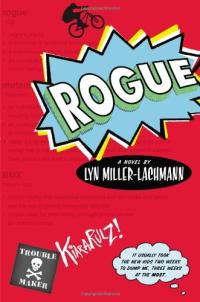
Kiara has Asperger’s syndrome, and it’s hard for her to make friends. She wishes she could be like her hero Rogue — a misunderstood X-Men mutant who used to hurt anyone she touched until she learned how to control her special power. When Chad moves in across the street, Kiara hopes that, for once, she’ll be able to make friendship stick. When she learns his secret, she’s so determined to keep Chad as a friend that she agrees not to tell. But being a true friend is complicated and it might be just the thing that leads Kiara to find her own special power. The story celebrates everyone’s ability to discover and use whatever it is that makes them different.
Rogue

Twelve-year-old Catherine just wants a normal life. Which is near impossible when you have a brother with autism and a family that revolves around his disability. But the summer Catherine meets Jason, a surprising, new sort-of friend, and Kristi, the next-door friend she’s always wished for, it’s her own shocking behavior that turns everything upside down and forces her to ask: What is normal? (2007 Newbery Honor Book)
Rules

Willow Chance is a 12-year-old genius, obsessed with nature and diagnosing medical conditions, who finds it comforting to count by 7s. Willow is also an outsider, a girl possibly somewhere on the autism/Asperger’s spectrum (although that is never stated). Suddenly Willow’s world is tragically changed when her parents both die in a car crash, leaving her alone in a baffling world. This story is about her journey to find a fascinatingly diverse and fully believable surrogate family.
Counting by 7s

Ted and Kat watched their cousin Salim board the London Eye, but after half an hour it landed and everyone trooped off — except Salim. Ted and his older sister, Kat, become sleuthing partners and follow a trail of clues across London in a desperate bid to find their cousin. Ultimately it comes down to Ted, whose brain works in its own very unique way, to find the key to the mystery.
The London Eye Mystery
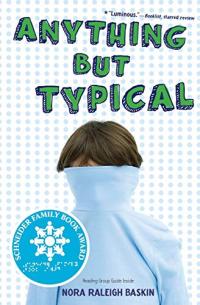
A story told entirely from the point of view of Jason, an autistic boy who is a creative-writing whiz and deft explainer of literary devices, but markedly at a loss in social interactions with “neurotypicals” both at school and at home. He is most comfortable in an online writing forum called Storyboard, where his stories kindle an e-mail-based friendship with a girl. The author describes Jason’s attempts to interpret body language and social expectations, and ultimately how Jason moves through his failures and triumphs with the same depth of courage and confusion of any boy his age.
Anything But Typical

From inside Caitlin’s head, readers see the very personal aftermath of a middle school shooting that took the life of the older brother she adored. Caitlin is a bright fifth grader and a gifted artist. She also has Asperger Syndrome, and her brother, Devon, was the one who helped her interpret the world. A compassionate school counselor works with her, trying to teach her the social skills that are so difficult for her. Through her own efforts and her therapy sessions, she begins to come to terms with her loss and makes her first, tentative steps toward friendship. (Winner of the National Book Award)
Mockingbird
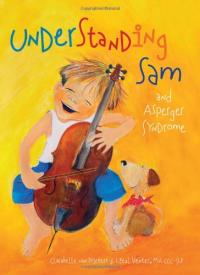
Sam doesn’t like his pancakes to touch, his coat hurts his skin, and his sister is annoyed by his incessant singing. But once he is diagnosed, teamwork-based support helps Sam’s life become a little easier. The book includes 10 helpful tips geared toward children, showing them how to respect and accept differences as well as to interact with a classmate or friend with Asperger’s.
Understanding Sam and Asperger Syndrome
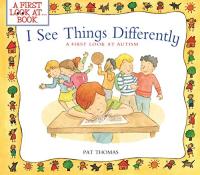
A sensitive, gently illustrated book about helping a child understand autism in a sibling, playmate, or classmate. The storyline is simple and easily accessible to younger children, who will learn that exploring the personal feelings around social issues is a first step in dealing with them.
I See Things Differently: A First Look at Autism

Julie can’t wait to go to the park and feed the ducks with her big sister. Her little brother, Ian, who has autism, wants to go, too. Ian doesn’t have the same reactions to all the sights and sounds that his sisters have. Through its simple plot, the story conveys a complex family relationship and demonstrates the ambivalent emotions Julie feels about her autistic brother. This natural mix of resentment, anger, isolation, loyalty, and love is explained in preliminary notes written by professional pediatric caregivers.
Ian’s Walk: A Story about Autism

When an autistic child joins a mainstream school, many children can find it difficult to understand and cope with a student that is somewhat ‘different’ to them. This story encourages other children to be mindful and patient of the differences that exist and to also appreciate the positive contribution that an autistic child can make to the group.
A Friend Like Simon

A young girl sits next to a boy named Louis at school. Louis has autism, but through imagination, kindness, and a special game of soccer, his classmates find a way to join him in his world. Then they can include Louis in theirs.
